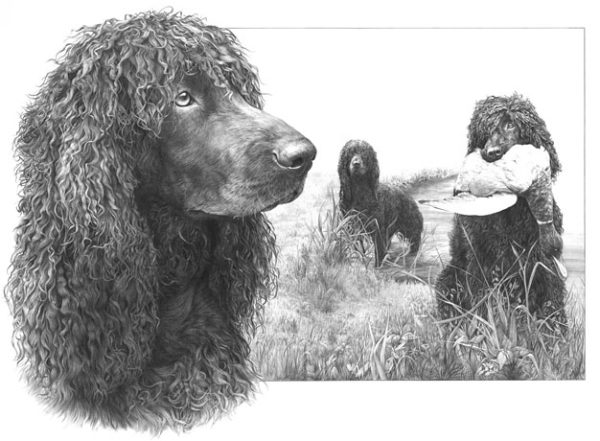
Imagine that you’ve been invited to dinner. On the menu is pheasant, and just as you’re about to cut into the savory breast next to the asparagus spears and new potatoes, you notice a puncture in the otherwise smooth white meat.
Wait, there’s another one!
As you tilt your head, you realize that the puncture marks look suspiciously like bite marks.
If the meat on your plate is supposed to be where no man has gone before, rest assured, it wasn’t a man, it was a dog, and this is why “soft mouthed” dogs are valued by sportsmen. No one wants to put pre-chewed meat into their mouths, let alone from fowl so mangled that is no longer resembles something edible.
Indeed, today the UK’s Kennel Club’s J-regulations that govern trialling include this passage: “There should be no hesitation or sentiment with hard mouth. The dog must be eliminated.” The rules go on to suggest that game should be examined for signs of a hard mouth, emphasizing that a hard-mouthed dog seldom gives visible evidence of hardness as it will simply crush in one or both sides of the ribs.
What about the opposite end of the spectrum? Are there gun dogs in which a “hard mouth” is not only tolerated, but preferred? Our cursory homework suggests there are. While a hard mouthed dog might be one that is poorly trained or has poor bite inhibition, the marvelous Australian writer, Jane Harvey, points out that the Irish Water Spaniel was a hard-mouthed hunting dog that not only found and retrieved game, but could kill it, as well.
Why would anyone want this in their hunting dog?
Having a hard mouthed gun dog meant that ownership of expensive guns wasn’t essential to hunting birds. This opened up the field, no pun intended, for hunters of poorer means. It also meant that the hunter with an IWS had a fantastic all-purpose gundog that worked with them, stayed steady and calm in a boat or blind, was undaunted by plunging into cold-water, and had a work ethic par none.
We’ve also read that some hunters (i.e., Germans) expected their hunting dogs to be able to take on a wounded fox or feral boar, so many of their working dogs were – and needed to be – hard-mouthed.
We end with a bit of humor, albeit a frustrating conversation that many of us have had with the public. It comes from the marvelous on-line and hard copy publication, Project Upland, in a piece about the Irish Water Spaniel. If you’ve had this kind of dialogue, you might be nodding your head in recognition:
Is that a Doodle?
…No, it is an Irish Water Spaniel.
I thought water dogs were from Portugal?
…It is a spaniel.
Oh, a Portuguese Water Spaniel!
…No, an Irish Water Spaniel.
Are you sure it is not a Doodle? It looks like one.
…I’m sure.
To read more about the Irish Water Spaniel, check out the post below from 2019:
Image: Irish Water Spaniel #1 by Mike Sibley
http://www.sibleyfineart.com/
